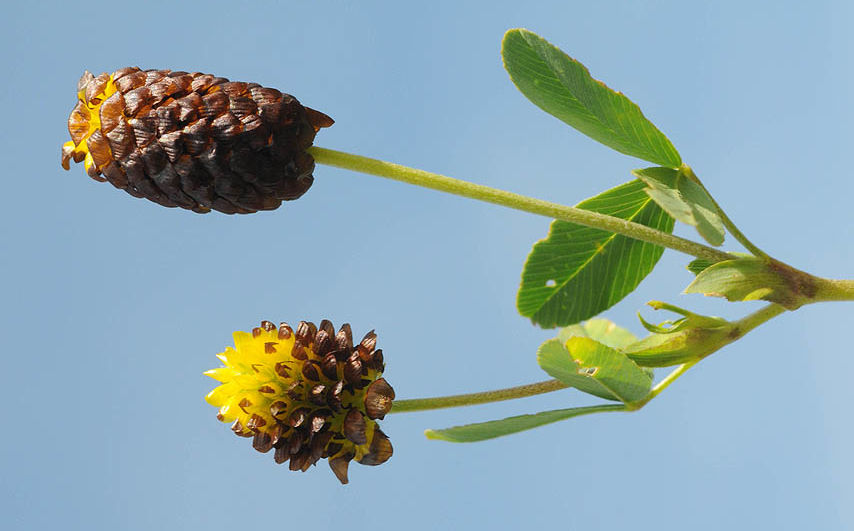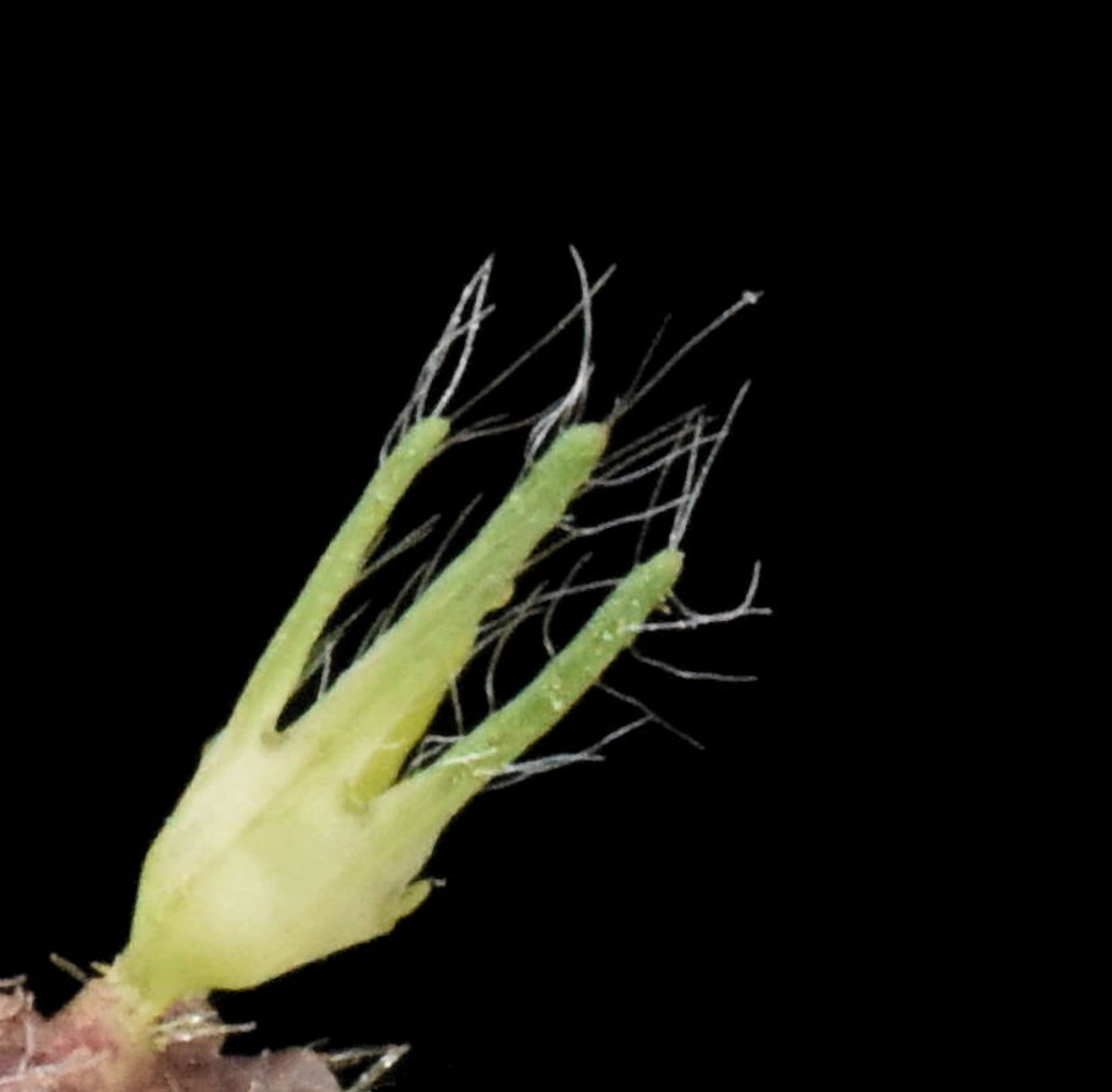Pale clover
trifolium spadiceum
Also known as: ["Pale clover","Ashy clover"]
Overview
A species of clover native to Europe and parts of Asia, characterized by its pale-colored flowers and trifoliate leaves.
Benefits & Perks
["wildlife attractant (bees, butterflies, birds)","drought tolerant","low maintenance"]
Botanical Classification
| Phylum: | Magnoliophyta |
| Class: | Magnoliopsida |
| Order: | Fabales |
| Family: | Fabaceae |
| Genus: | Trifolium |
| Botanical Name: | Trifolium spadiceum |
Plant Characteristics
Basic Information
- Category: Flowers
- Suitable Location: garden bed or container in a location with good air circulation
- Suitable For:
- Is Weed: No
- Allergenicity: low
Environmental Needs
- Climate: {"temperatureRange":"5–30°C"}
- Hardiness: {"zones":"6–9"}
- Misting: rarely required, only if ambient humidity is very low
- Drainage: Fast-draining to prevent waterlogging.
- Soil Type: Well-draining potting mix with added organic matter; can include peat or coco coir.
Maintenance Level
- Maintenance Level: low
- Toughness Level: moderate
- Pruning Frequency: After flowering; as needed to remove dead or damaged growth.
- Pruning Intensity: Light to moderate; avoid heavy pruning unless necessary to control size.
Care Details
Ideal Sunlight Coverage:
Bright indirect light for 6–8 hours daily; adjust to partial shade during intense summer sun.
Sunlight Tolerance Tips:
Gradually acclimate to stronger light; protect from direct midday sun; move indoors if outdoor conditions become too harsh.
Care Requirements
Care Difficulty
easymoderate
Sunlight
full sun to partial shade
Rotate plant weekly; use sheer curtains for filtered light; avoid south-facing windows in summer.
Watering
every 7–10 days, allowing soil to dry slightly between waterings
Water thoroughly but infrequently; ensure proper drainage; avoid wetting foliage.
Soil
well-draining, loamy soil with moderate organic content
pH: Slightly acidic to neutral (pH 6.0–7.0).
Use a mix with good drainage; avoid heavy clay soils; top-dress with compost annually.
Temperature
Prefers 60–75°F (15–24°C); cooler temperatures (50–60°F) are acceptable during dormancy.
Avoid sudden temperature changes; maintain consistent room temperature; protect from drafts.
Fertilizing
every 4–6 weeks during active growth with balanced liquid fertilizer
Fertilize after watering to prevent root burn; flush soil occasionally to prevent salt buildup; stop fertilizing in fall.
Propagation
Methods
Stem cuttings or division; stem cuttings are more common for home growers.
Step-by-Step Propagation Guide
- Take a 4–6 inch cutting.
- Remove lower leaves.
- Dip in rooting hormone.
- Plant in medium.
- Maintain humidity.
Best Time: Spring or early summer when the plant is actively growing.
Environment
High humidity (70–90%), warm temperatures (65–75°F), and indirect light.
Medium
Well-draining potting mix with perlite or sand; can also use water propagation for cuttings.
Hormone
Rooting hormone is optional but recommended for faster root development.
Timeline
Roots may develop in 2–4 weeks; new growth may appear in 6–8 weeks.
Tools Needed
Pruning shears, rooting hormone, small pots, plastic bags or propagator.
Quick Tips
Use healthy, non-flowering stems; keep soil consistently moist; provide bottom heat for faster rooting.
Pruning & Repotting
Pruning Guide
Method
Pinch back tips; deadhead spent flowers; trim stems just above a leaf node.
Pruning Plan
Remove spent flowers to encourage reblooming; trim leggy growth to maintain shape.
Tools
Clean pruning shears or scissors, gloves.
Checklist
Sanitize tools; prune after flowering; remove dead growth; shape as needed.
Repotting Guide
Best Season
Spring, before the active growing season begins.
Pot Size
Choose a pot 1–2 inches larger in diameter than the current one.
Method
Remove plant gently; trim any circling roots; place in a new pot with fresh soil; water lightly.
Suggestions
Repot every 2–3 years or when roots fill the pot; beneficial for fresh soil and root space.
Checklist
Prepare new pot with drainage; trim roots if crowded; use fresh soil mix; water after repotting.
Advanced Care Tips
Watering Mastery
Watering Checklist
Check soil moisture; water deeply; ensure drainage; avoid wetting leaves.
How to Apply Water Properly
Water at the base of the plant, ensuring moisture reaches the root zone; allow excess water to drain away; water in the morning to reduce evaporation.
Watering Schedule Tips
Water deeply once the top inch of soil feels dry; reduce frequency in winter to prevent root rot.
Soil Improvement
Add perlite or sand for drainage; incorporate compost for fertility; ensure good aeration.
Temperature Stress Management
Signs of Temperature Issues
Wilting, yellowing leaves, or stunted growth in extreme heat; leaf drop or browning in cold stress.
Cold Stress
Slows growth; may cause leaf discoloration or dieback if temperatures drop below 50°F (10°C).
Solution: Move to a warmer location; insulate pots with bubble wrap; avoid cold drafts.
Hot Stress
Leaves may scorch, wilt, or drop; flowering may be reduced in excessive heat.
Solution: Provide shade during peak sun; increase humidity; water more frequently but avoid waterlogging.
Fertilizing Guide
Fertilizing Checklist
Check fertilizer label; dilute properly; apply during active growth; avoid winter feeding.
Fertilizing Method
Use balanced liquid fertilizer diluted to half strength every 4–6 weeks during growing season; avoid fertilizing in winter.
Common Problems & Solutions
Toxicity Warning
Cats
Non-toxicTrifolium spadiceum is not considered toxic to cats. It does not produce any known harmful effects when ingested by felines.
🌿 Toxic Parts:
⚡ Toxic If:
if eaten
Dogs
Non-toxicTrifolium spadiceum is not considered toxic to dogs. It does not produce any known harmful effects when ingested by canines.
🌿 Toxic Parts:
⚡ Toxic If:
if eaten
Humans
Non-toxicTrifolium spadiceum is not considered toxic to humans. It has no known adverse physiological effects when ingested.
🌿 Toxic Parts:
⚡ Toxic If:
if eaten
Frequently Asked Questions
Q: Is Trifolium spadiceum toxic to pets?
A: No, it is non-toxic to dogs and cats.
Q: Does this plant attract wildlife?
A: Yes, it attracts bees, butterflies, and birds.
Q: How difficult is it to care for?
A: It is easy to care for with low maintenance needs.
Quick Reference
| Family: | Fabaceae |
| Care: | easy |
| Light: | full sun to partial shade |
| Water: | every 7–10 days, allowing so |
Get Expert Care Tips
Download the Plantious app for personalized care reminders and plant identification!
Google Play App Store








